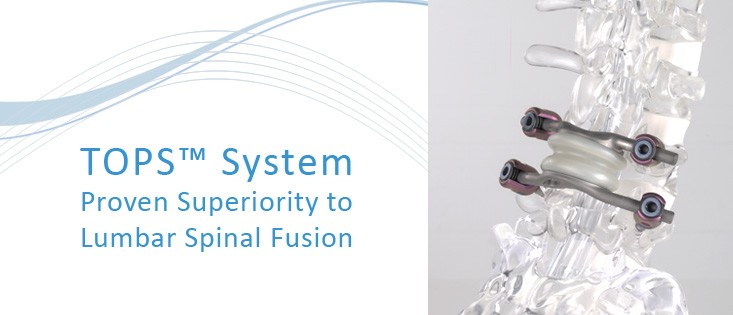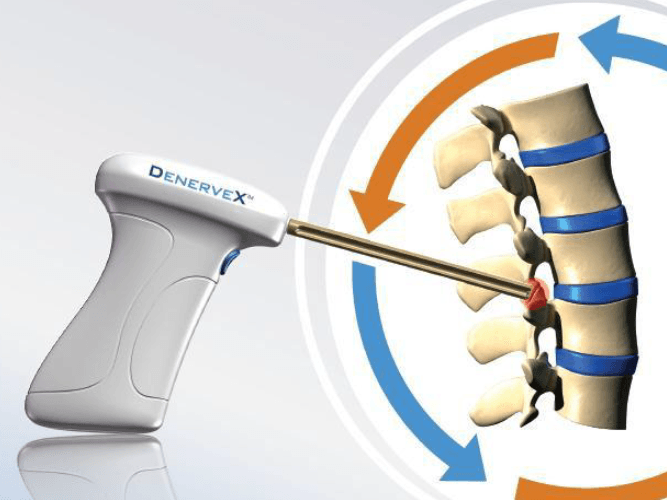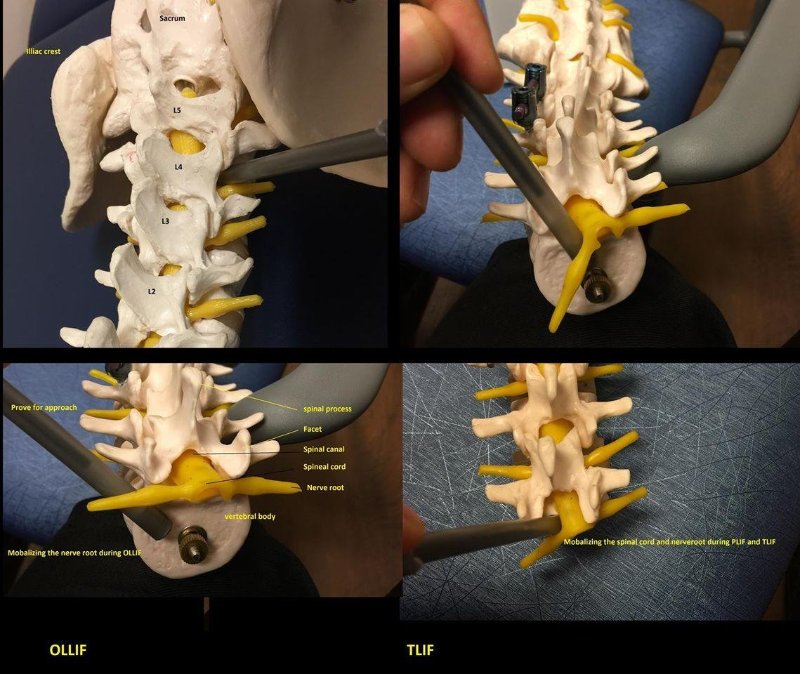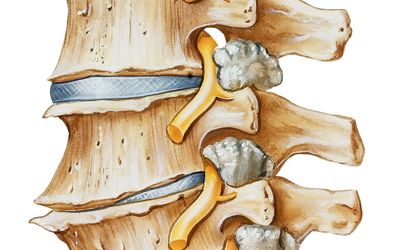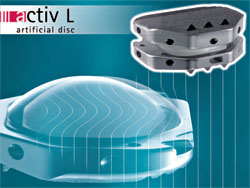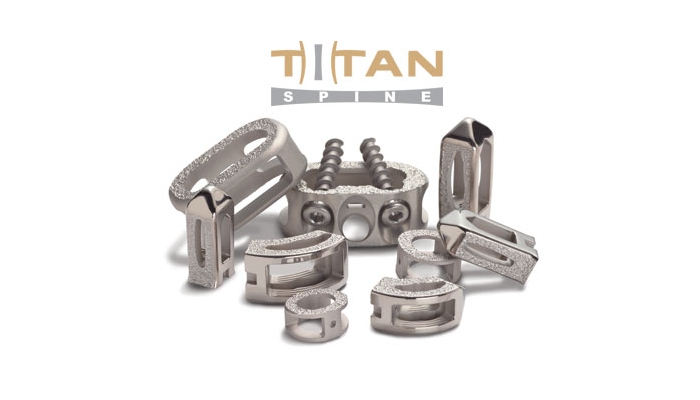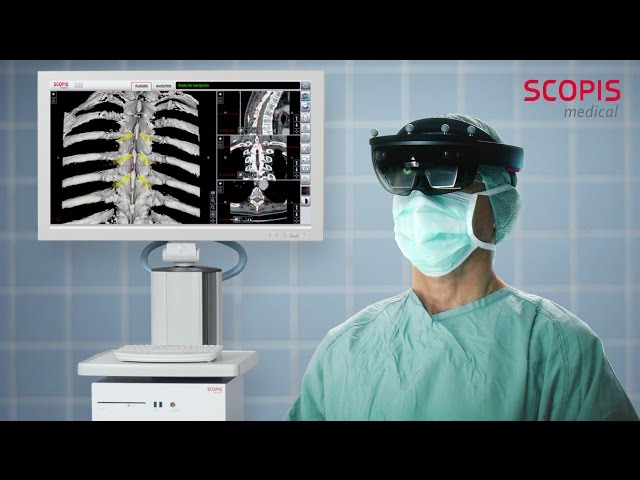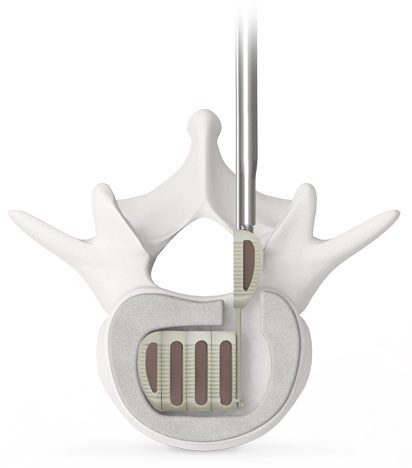MEQUON, Wis.–(BUSINESS WIRE)–Titan Spine, a medical device surface technology company focused on developing innovative spinal interbody fusion implants, today announced Ed Graubart has joined the leadership team as Vice President of Professional Development. Mr. Graubart will be responsible for enhancing and building the Company’s infrastructure for training and professional development at Titan Spine as demand accelerates for its nanoLOCK® surface technology, the only nano-cleared interbody device on the market shown to elicit a nano-cellular level response for bone growth.1
Ted Bird, Chief Commercial Officer of Titan Spine, commented, “Ed is a highly accomplished veteran of the orthopedic medical device industry, with more than 27 years of sales team infrastructure and personnel building experience at leading spine companies including NuVasive, DePuy Spine, and EBI. We are excited to have such a highly regarded leader join our Titan Spine team and we look forward to Ed’s contributions to enhance and build the infrastructure for training and professional development during a time of tremendous growth and momentum at Titan Spine as demand accelerates for both our original Endoskeleton® surface technology implants and the recently introduced interbody systems with our unique and proprietary nanoLOCK® technology.”
Mr. Graubart added, “Titan Spine’s nanoLOCK® technology is aggressively paving the way for devices to create an osteogenic response in the spine interbody device industry. The Company has recently shifted into a critical period marked by scaling up to manage its substantial growth over the last few years, achieving record sales for the first quarter of 2017, increasing the number of nanoLOCK® surgeon adopters across the U.S., and significantly increasing sales volume of nanoLOCK® since launch in the fourth quarter of last year. I am immensely excited to join the Titan team and look forward to supporting this drive and energy through all aspects of the organization, including tailoring training programs and aligning structure to support our growth and success.”
Mr. Graubart joins Titan Spine from Ceterix Orthopaedics, a developer of novel surgical tools that improve a surgeon’s ability to perform meniscal repairs, where he served as Vice President of Sales. Prior to Ceterix, Mr. Graubart spent 10 years in leadership and executive sales and sales training positions at NuVasive, supporting the company’s growth from $38 million in 1995 to over $800 million in 2015. Before this, Mr. Graubart was Director of Spine Arthroplasty at DePuy Spine, Inc. where he was part of an elite team hired to train and support the introduction of the first lumbar artificial disc approved in the United States. Mr. Graubart started his career in orthopedic and spine medical device sales in 1992 with EBI Medical Systems (A Biomet Company), where he spent 14 years in various sales and leadership roles during his tenure. Mr. Graubart received his B.S. in Business Administration and Marketing at the University of Dayton.
Titan Spine offers a full line of Endoskeleton® devices that feature Titan Spine’s proprietary nanoLOCK® surface technology, consisting of a unique combination of roughened topographies at the macro, micro, and nano levels (MMN™). This unique combination of surface topographies is designed to create an optimal host-bone response and actively participate in the fusion process by promoting the upregulation of osteogenic and angiogenic factors necessary for bone growth, encouraging natural production of bone morphogenetic proteins (BMPs), downregulating inflammatory factors, and creating the potential for a faster and more robust fusion.2,3,4 All Endoskeleton® devices are covered by the company’s risk share warranty.
About Titan Spine
Titan Spine, LLC is a surface technology company focused on the design and manufacture of interbody fusion devices for the spine. The company is committed to advancing the science of surface engineering to enhance the treatment of various pathologies of the spine that require fusion. Titan Spine, located in Mequon, Wisconsin and Laichingen, Germany, markets a full line of Endoskeleton® interbody devices featuring its proprietary textured surface in the U.S. and portions of Europe through its sales force and a network of independent distributors. To learn more, visit www.titanspine.com.
1 Olivares-Navarrete, R., Hyzy S.L., Gittens, R.A., Berg, M.E., Schneider, J.M., Hotchkiss, K., Schwartz, Z., Boyan, B. D. Osteoblast lineage cells can discriminate microscale topographic features on titanium-aluminum-vanadium surfaces. Ann Biomed Eng. 2014 Dec; 42 (12): 2551-61.
2 Olivares-Navarrete, R., Hyzy, S.L., Slosar, P.J., Schneider, J.M., Schwartz, Z., and Boyan, B.D. (2015). Implant materials generate different peri-implant inflammatory factors: PEEK promotes fibrosis and micro-textured titanium promotes osteogenic factors. Spine, Volume 40, Issue 6, 399–404.
3 Olivares-Navarrete, R., Gittens, R.A., Schneider, J.M., Hyzy, S.L., Haithcock, D.A., Ullrich, P.F., Schwartz, Z., Boyan, B.D. (2012). Osteoblasts exhibit a more differentiated phenotype and increased bone morphogenetic production on titanium alloy substrates than poly-ether-ether-ketone. The Spine Journal, 12, 265-272.
4 Olivares-Navarrete, R., Hyzy, S.L., Gittens, R.A., Schneider, J.M., Haithcock, D.A., Ullrich, P.F., Slosar, P. J., Schwartz, Z., Boyan, B.D. (2013). Rough titanium alloys regulate osteoblast production of angiogenic factors. The Spine Journal, 13, 1563-1570.
![]()

